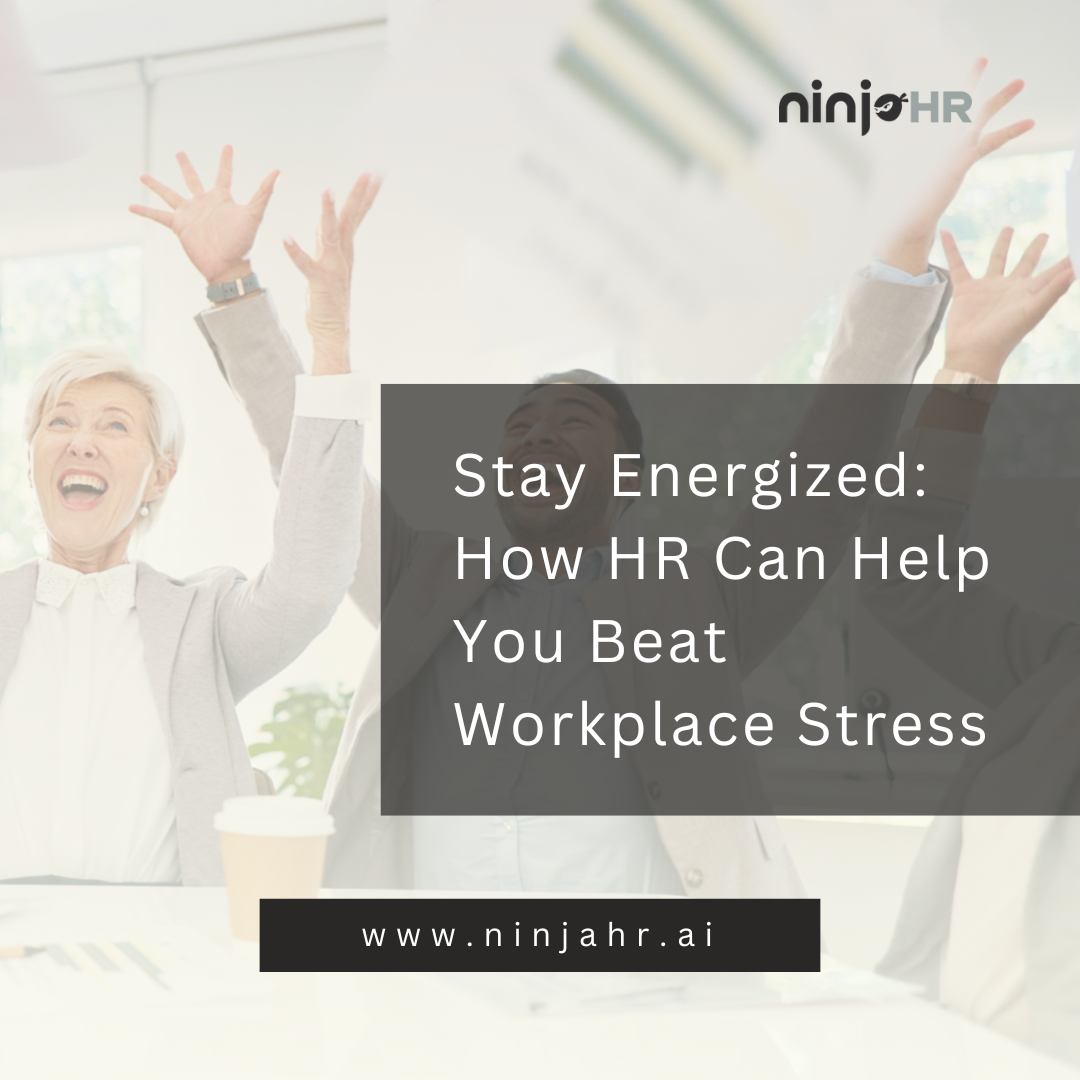HR’s Game Plan for a More Productive, Less Stressful Workday
Introduction
In today’s fast-paced work environment, productivity and stress management are two sides of the same coin. Human Resources (HR) departments play a pivotal role in shaping the work culture, policies, and practices that directly impact employee well-being and efficiency. A well-thought-out HR strategy can transform the workday from a source of stress to a productive and fulfilling experience. This article explores actionable strategies HR professionals can implement to create a more productive and less stressful workday for employees.
Understanding the Link Between Productivity and Stress
Before diving into solutions, it’s essential to understand the relationship between productivity and stress. While a certain level of stress can motivate employees to perform better, chronic stress leads to burnout, decreased productivity, and higher turnover rates. HR’s goal should be to strike a balance—creating an environment where employees feel challenged but not overwhelmed.
1. Foster a Culture of Open Communication
Why It Matters
Open communication is the cornerstone of a healthy workplace. When employees feel heard and valued, they are more likely to engage with their work and less likely to experience stress.
HR’s Role
- Implement Regular Check-Ins: Schedule one-on-one meetings between employees and managers to discuss workload, challenges, and goals.
- Encourage Feedback: Create anonymous feedback channels where employees can voice concerns without fear of retaliation.
- Promote Transparency: Share company goals, updates, and decisions openly to build trust and reduce uncertainty.
2. Prioritize Work-Life Balance
Why It Matters
Employees who feel overworked are more prone to stress and less productive. A healthy work-life balance is crucial for long-term employee satisfaction and performance.
HR’s Role
- Flexible Work Arrangements: Offer remote work options, flexible hours, or compressed workweeks.
- Encourage Time Off: Actively promote the use of vacation days and ensure employees feel comfortable taking breaks.
- Set Boundaries: Discourage after-hours communication and respect employees’ personal time.
3. Invest in Employee Development
Why It Matters
Employees who feel stagnant in their roles are more likely to experience stress and disengagement. Providing opportunities for growth can boost morale and productivity.
HR’s Role
- Training Programs: Offer workshops, courses, and certifications to help employees develop new skills.
- Career Pathing: Work with employees to create clear career progression plans.
- Mentorship Programs: Pair employees with mentors to provide guidance and support.
4. Streamline Processes and Reduce Bureaucracy
Why It Matters
Inefficient processes and unnecessary red tape can frustrate employees and waste valuable time. Simplifying workflows can lead to a more productive workday.
HR’s Role
- Audit Existing Processes: Identify bottlenecks and areas for improvement.
- Leverage Technology: Implement tools and software to automate repetitive tasks.
- Empower Employees: Give employees the autonomy to make decisions without excessive oversight.
5. Promote Physical and Mental Well-Being
Why It Matters
Physical and mental health are directly linked to productivity and stress levels. Employees who feel well are more likely to perform at their best.
HR’s Role
- Wellness Programs: Offer gym memberships, yoga classes, or mental health resources.
- Ergonomic Workspaces: Ensure employees have comfortable and functional workstations.
- Mental Health Support: Provide access to counseling services and stress management workshops.
6. Recognize and Reward Efforts
Why It Matters
Recognition is a powerful motivator. When employees feel appreciated, they are more likely to stay engaged and less likely to experience stress.
HR’s Role
- Employee Recognition Programs: Implement systems for peer-to-peer and manager-to-employee recognition.
- Celebrate Milestones: Acknowledge birthdays, work anniversaries, and project completions.
- Monetary and Non-Monetary Rewards: Offer bonuses, gift cards, or extra time off as incentives.
7. Create a Positive Work Environment
Why It Matters
A positive work environment fosters collaboration, creativity, and job satisfaction. It also reduces stress and enhances productivity.
HR’s Role
- Team-Building Activities: Organize events and activities to strengthen team bonds.
- Inclusive Culture: Promote diversity and inclusion to ensure all employees feel welcome.
- Office Design: Create a workspace that is inviting, comfortable, and conducive to productivity.
8. Monitor and Address Burnout
Why It Matters
Burnout is a significant threat to productivity and employee well-being. Early detection and intervention are key to preventing long-term damage.
HR’s Role
- Burnout Surveys: Conduct regular surveys to gauge employee stress levels.
- Stress Management Resources: Provide access to stress management tools and techniques.
- Encourage Breaks: Promote the importance of taking regular breaks throughout the day.
9. Leverage Data and Analytics
Why It Matters
Data-driven insights can help HR professionals identify trends, measure the effectiveness of initiatives, and make informed decisions.
HR’s Role
- Employee Engagement Surveys: Use surveys to gather feedback and track changes over time.
- Productivity Metrics: Analyze data to identify patterns and areas for improvement.
- Predictive Analytics: Use predictive models to anticipate and address potential issues before they escalate.
10. Lead by Example
Why It Matters
HR professionals set the tone for the organization. By modeling healthy behaviors and attitudes, they can inspire employees to do the same.
HR’s Role
- Practice What You Preach: Demonstrate work-life balance, open communication, and self-care.
- Be Approachable: Create an environment where employees feel comfortable seeking guidance.
- Continuous Improvement: Regularly evaluate and refine HR strategies to ensure they meet employee needs.
Conclusion
A more productive and less stressful workday is within reach when HR takes a proactive and holistic approach. By fostering open communication, prioritizing well-being, and leveraging data, HR professionals can create an environment where employees thrive. The strategies outlined in this article provide a roadmap for HR departments looking to enhance productivity and reduce stress in the workplace. Remember, a happy and healthy workforce is the foundation of organizational success.

